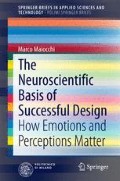Abstract
The chapter presents various examples of projects, some of them really implemented, some just as projects, some as products of teaching laboratories, all of them coping with the design of the emotions for the users. The projects have been carried on mainly in health care environments and for public transportation systems.
Access this chapter
Tax calculation will be finalised at checkout
Purchases are for personal use only
Notes
- 1.
Recently we observed interesting solutions in such direction at the health care centre Humanitas, in Rozzano (near to Milan): the people accepted by the First Aid, provided with a numbered ticket, can see on a screen the estimated waiting time for the service.
- 2.
As for most of the projects here described, they were designed and implemented by the students of the Courses of Design of Communication of the Politecnìnico di Milano. The names of the authors and an extended description of the projects can be found in Maiocchi (2007, 2008, 2010a, b).
- 3.
We discussed many times on how to measure the effectiveness of the undertaken actions; beside the best practice of considering the environment as a part of the health care environment, and then of applying well known methods, as it is done for the drugs tests (statistical methods based on double-blind approaches, with placebo subministrations), the doctors of the Istituto dei Tumori suggested to record the compliance of the patients behaviours to the raccomendations of their doctors. In fact, one of the recognised problems is the fact that the patients disregard what it is asked to them. So, this “passport” is not simply an emotional gadget, but an element able to change the behaviour of the patients, making them “more” in touch with the centre, as needed.
- 4.
The project has been designed by Wei Dian and Zhu Chao.
- 5.
The project has been designed by S. Bonafini, E. Cattaneo and M. Ide.
Author information
Authors and Affiliations
Corresponding author
Rights and permissions
Copyright information
© 2015 The Author(s)
About this chapter
Cite this chapter
Maiocchi, M. (2015). Case Studies. In: The Neuroscientific Basis of Successful Design. SpringerBriefs in Applied Sciences and Technology(). Springer, Cham. https://doi.org/10.1007/978-3-319-02801-9_7
Download citation
DOI: https://doi.org/10.1007/978-3-319-02801-9_7
Published:
Publisher Name: Springer, Cham
Print ISBN: 978-3-319-02800-2
Online ISBN: 978-3-319-02801-9
eBook Packages: EngineeringEngineering (R0)

